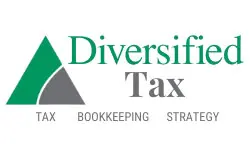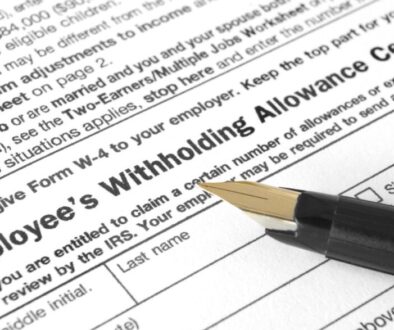How to Make Estimated Tax Payments
How to Make Estimated Tax Payments
Navigating the complexities of estimated tax payments can be a daunting task for many taxpayers, especially those with diverse income sources or self-employment. However, understanding the nuances of this process is crucial to avoiding penalties and ensuring compliance with tax regulations. In this extensive guide, we’ll delve into the fundamentals of estimated taxes, explore the key factors that determine your payment obligations, and provide practical strategies to help you manage this critical aspect of your financial responsibilities.
Defining Estimated Taxes
Estimated taxes are periodic payments made throughout the year to the Internal Revenue Service (IRS) and your state tax authority. These payments are typically required for individuals who have income that is not subject to withholding, such as self-employment, interest, dividends, capital gains, and certain other sources. By making estimated tax payments, you can ensure that you are paying your taxes as you earn your income, rather than facing a potentially large tax bill when you file your annual return.
Determining the Need for Estimated Tax Payments
The first step in understanding your estimated tax obligations is to determine whether you are required to make these payments. Generally, you will need to make estimated tax payments if you expect to owe more than $1,000 in federal taxes for the tax year and your withholding and credits will not cover at least 90% of your total tax liability or 100% of the previous year’s tax liability (110% if your adjusted gross income (AGI) exceeds $150,000 for single filers or $75,000 for married filing separately).
To make this assessment, consider the following:
- Projected Tax Liability: Estimate your total tax liability for the current year based on your expected income, deductions, and credits.
- Withholding and Credits: Determine the amount of taxes that will be withheld from your income sources, such as wages, and any credits you expect to claim.
- Comparison to Prior Year: Compare your estimated tax liability to the total tax you paid in the previous year to see if you meet the safe harbor requirements.
If the difference between your projected tax liability and your withholding and credits is greater than $1,000, and you don’t meet the safe harbor requirements, you will likely need to make estimated tax payments.
Calculating Estimated Tax Payments
Once you’ve determined that you need to make estimated tax payments, the next step is to calculate the appropriate amount. This can be done using the following methods:
Method 1: Annualized Income Installment Method
This method involves calculating your tax liability based on your income, deductions, and credits for each quarter of the year. This approach can be more accurate if your income fluctuates significantly throughout the year.
Method 2: Prior Year’s Tax Liability
If your income and deductions are relatively consistent from year to year, you can base your estimated tax payments on 100% (or 110% if your AGI exceeds the applicable threshold) of your previous year’s tax liability. This is often the simplest approach.
Method 3: Current Year’s Estimated Tax Liability
If you expect your income to be higher or lower than the previous year, you can calculate your estimated tax liability for the current year based on your projected income, deductions, and credits. This method may require more frequent adjustments to your estimated payments as your situation changes.
Regardless of the method you choose, it’s important to review and update your estimated tax calculations periodically to ensure that you are making accurate and timely payments.
Timing of Estimated Tax Payments
Estimated tax payments are typically due on the following dates:
- April 15th
- June 15th
- September 15th
- January 15th (of the following year)
If you miss a payment or make it late, you may be subject to an underpayment penalty. To avoid this, it’s crucial to make your estimated tax payments on time and in the correct amounts.
Strategies for Smooth Estimated Tax Payments
To ensure a seamless estimated tax payment process, consider the following strategies:
- Withholding Adjustments: If you have a regular job with an employer, you can adjust your W-4 withholding to have more taxes withheld from your paychecks, reducing or eliminating the need for estimated tax payments.
- Automatic Payments: Set up automatic payments with the IRS or your state tax authority to ensure that your estimated tax payments are made on time and in the correct amounts.
- Quarterly Reminders: Use a calendar or task management system to set reminders for your upcoming estimated tax payment deadlines, helping you stay on top of your obligations.
- Estimated Tax Worksheets: Utilize the IRS Form 1040-ES worksheets or tax preparation software to accurately calculate your estimated tax payments and avoid underpayment penalties.
- Estimated Tax Payments from Refunds: If you expect to receive a tax refund, you can choose to apply all or a portion of it to your next year’s estimated tax payments, effectively making one of your quarterly payments in advance.
- Consulting a Tax Professional: For complex tax situations or if you’re unsure about your estimated tax obligations, consider consulting a qualified tax professional who can provide personalized guidance and ensure you are meeting all requirements.
Penalties for Underpayment of Estimated Taxes
Failing to make timely and accurate estimated tax payments can result in penalties from the IRS. The underpayment penalty is calculated based on the amount of tax you owe and the period of time the payment was late. To avoid these penalties, it’s crucial to stay on top of your estimated tax obligations and make payments in a timely manner.
Exceptions for Farmers and Fishermen
Certain taxpayers, such as farmers and fishermen, may be subject to different estimated tax payment rules. These individuals are considered “qualified farmers or fishermen” if they earn more than two-thirds of their taxable income from farming or commercial fishing activities. Qualified farmers and fishermen may be able to make a single estimated tax payment by January 15th of the following year, rather than making four quarterly payments.
Conclusion
Navigating the complexities of estimated tax payments can be a challenge, but with the right information and strategies, you can ensure compliance and avoid costly penalties. By understanding the key factors that determine your estimated tax obligations, calculating the appropriate payment amounts, and implementing effective payment strategies, you can take control of this important aspect of your tax planning. Remember to stay vigilant, consult with tax professionals when needed, and make timely payments to maintain a smooth and stress-free tax filing process.




